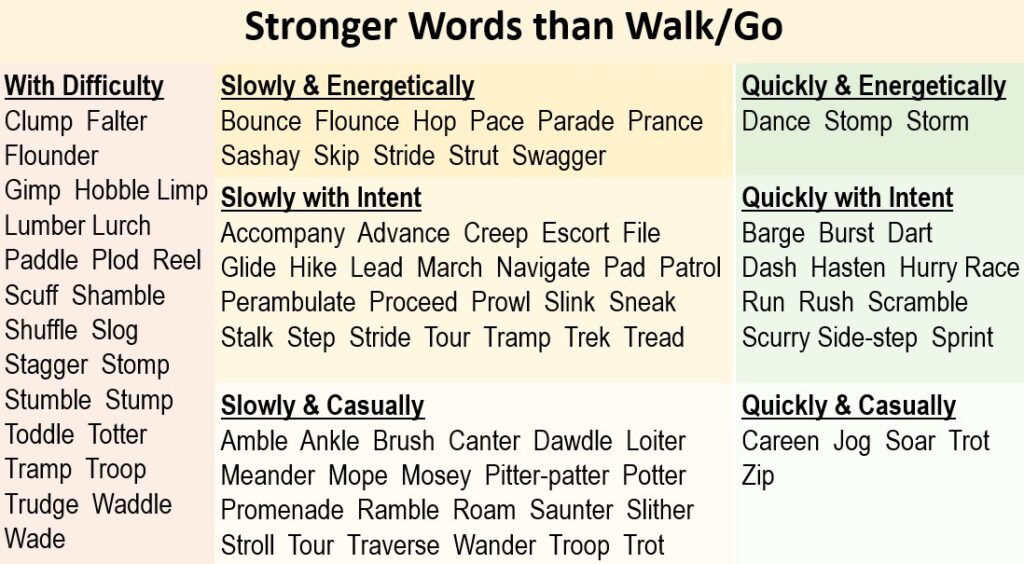Make your Verbs Specific
Weak Verbs
Consider the following image. What’s happening?

A reasonable description might be:
Janice takes the envelope and looks at it. (verbs are highlighted)
The verbs, take and look are vague. There are many ways to take something and there are many ways to look at something. When we want to make our action more specific, it’s tempting at first to use adverbs. For example, we might write:
Janice carefully takes the envelope and skeptically looks at it.
or
Janice hastily takes the envelope and briefly looks at it.
Adverbs certainly make the actions more specific. We better understand how Janice is taking and looking, however the sentence reads in a more clunky manner.
Stephen King famously said “The road to hell is paved with adverbs.” While he still uses them (maybe because he writes about demons from hell), the point is that using adverbs to strengthen a verb probably means the verb is weak to start with.
Instead of using adverbs to modify weak verbs, chose a strong verb instead. For example:
Janice chooses the envelope and analyzes it.
Janice grabs the envelope and glances at it.
Janice scoops up the envelope and skims it.
Janice selects the envelope and inspects it.
Janice snatches the envelope and scans it.
Janice swipes the envelope and stares at it.
Each of these examples conveys a very different, yet specific intention. When selecting a strong verb, you’ll want to match the mood, emotion, and motives for your character. A thesaurus can be extremely helpful to make your selection.
Other common verbs in fiction are walk and go.
Consider the picture below.

Suppose we write:
The student went home after school.
We can convey far more information by strengthening this verb.
The student raced home after school.
The student limped home after school.
The verb raced shows the child hurried home. Was he eager to play a video game at home? Was he avoiding a bully? The verb raced reinforces other aspects of the story. Similarly, the verb limped shows the child was injured. Was he beaten up by a bully? Did he fall off the playground’s climbing structure? Again, a specific verb can convey a meaning that’s consistent with the character’s experience more than a generic action can.
Stronger Verbs for Walk and Go
Characters can go from Point A to Point B in many different ways. Consider the following alternatives to using adverbs.

How to Enhance Your Writing with Specific Verbs
1. Identify each verb, asking yourself if it conveys the mood, emotion, and motive of the character performing the action.
2. Identify verbs modified by an adverb and ask yourself if you can replace them with a stronger verb.
3. Break out the thesaurus and hunt for the strongest and most appropriate verb.
4. As a last resort add an adverb to “strengthen” the verb.
Specificity isn’t only for verbs. It works wonders with nouns as well.
